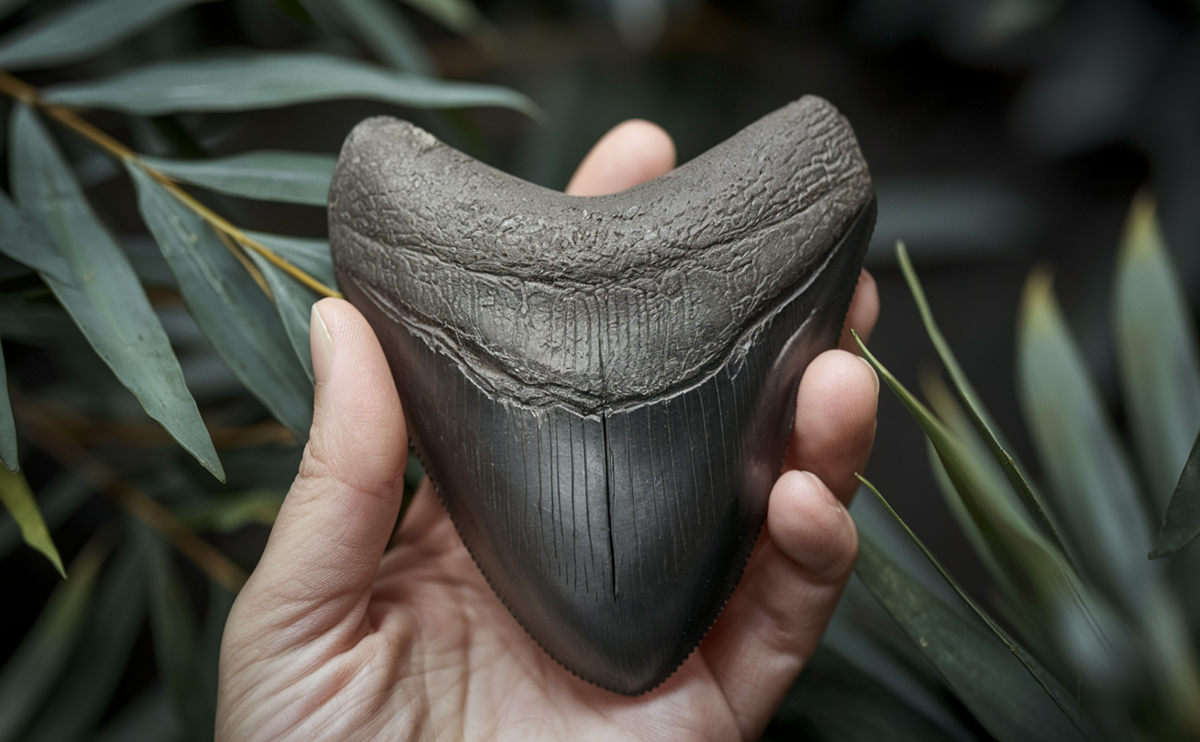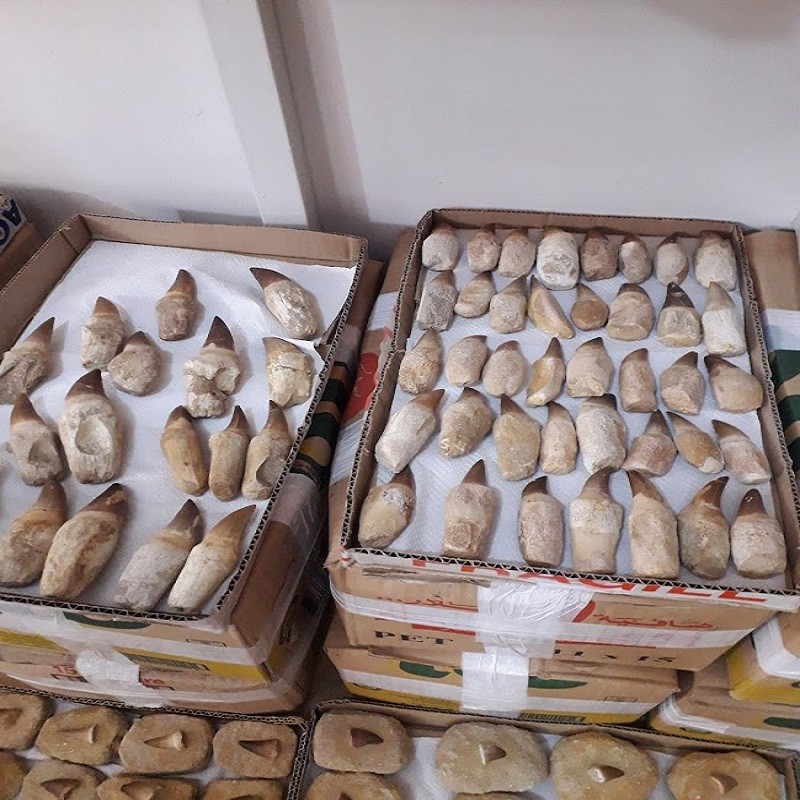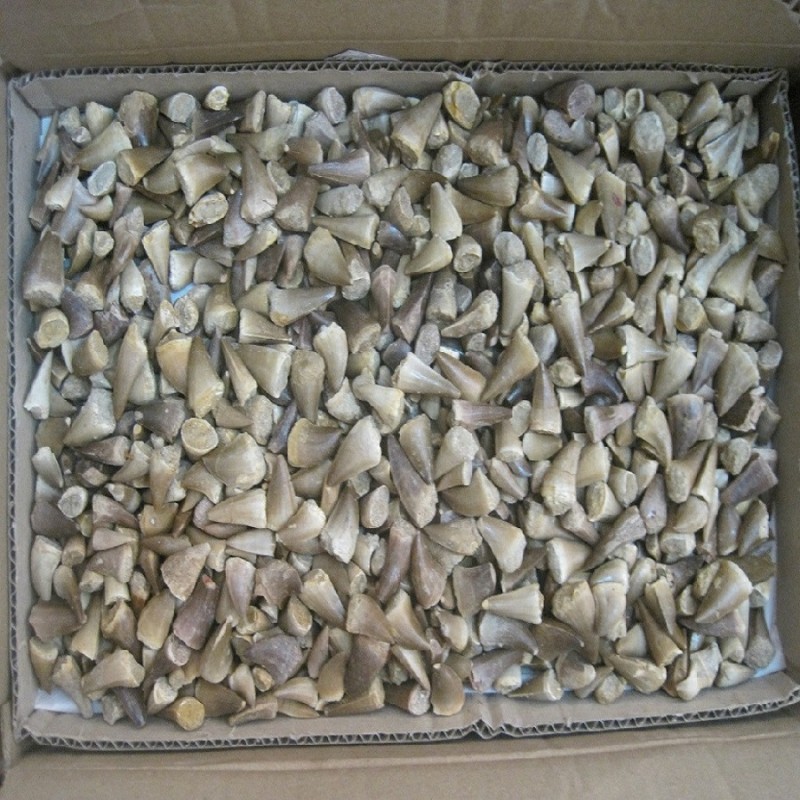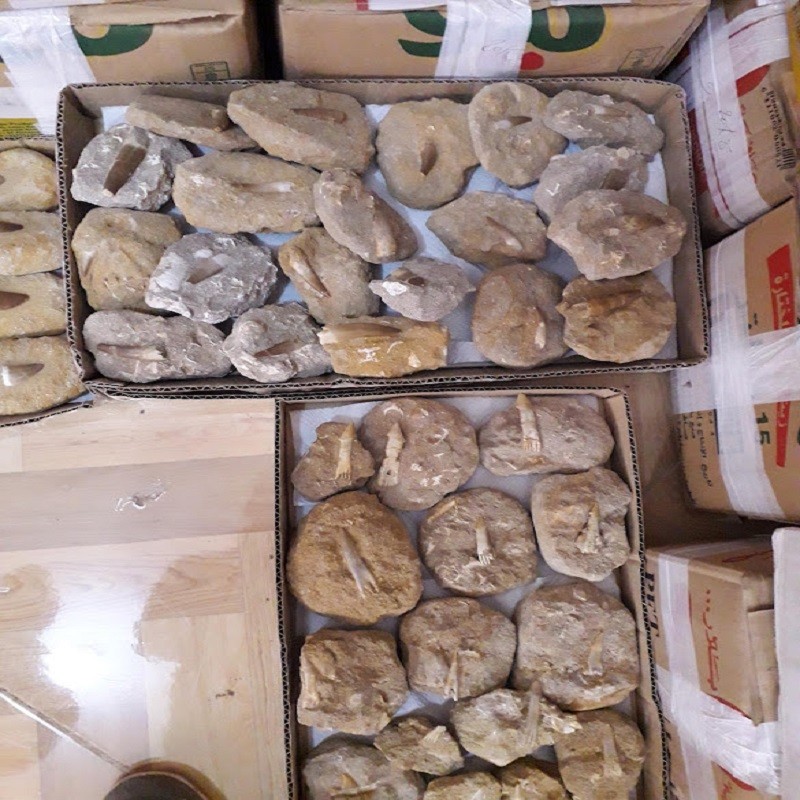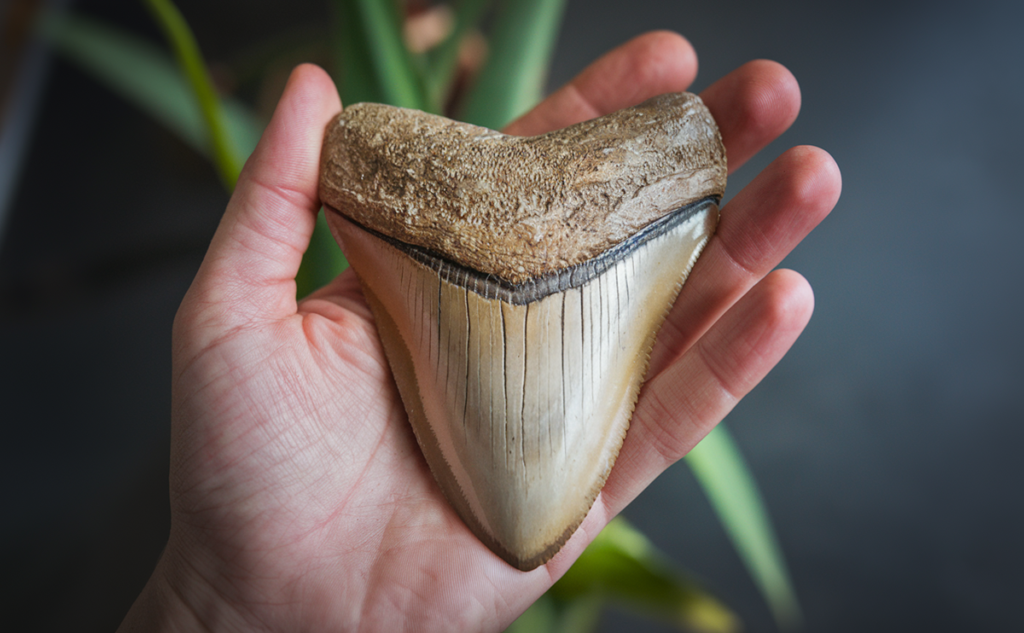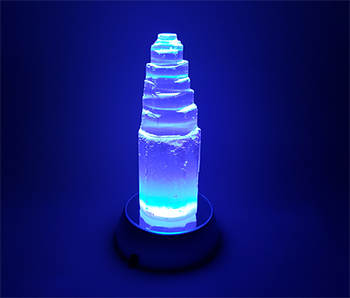Table of Contents / Jump to
- Introduction to Megalodon Teeth
- What is the Megalodon?
- The Formation of Megalodon Teeth
- Characteristics of Megalodon Teeth
- Types of Megalodon Teeth and Grading System
- Where to Find Megalodon Teeth
- Collecting and Preserving Megalodon Teeth
- Tips for Buying Megalodon Teeth
- Frequently Asked Questions
1. Introduction to Megalodon Teeth
Megalodon teeth are among the most sought-after fossils in the world, capturing the interest of fossil hunters, collectors, and paleontology enthusiasts alike. These prehistoric remnants offer a tangible connection to one of the ocean’s most formidable ancient predators, the megalodon shark. Standing as testaments to the immense size and power of this extinct species, megalodon teeth reveal a rich history of life in the Earth’s ancient oceans. This guide will delve into the incredible story behind these fossils and provide insights into finding and preserving them.
2. What is the Megalodon?
The megalodon (Otodus megalodon), an extinct species of shark that roamed the oceans approximately 23 to 3.6 million years ago, was the largest shark ever to exist, reaching lengths of up to 60 feet or more. These enormous predators fed on large marine mammals, such as whales and dolphins, utilizing a unique hunting style that likely involved powerful bites to immobilize their prey. Though the reasons for their extinction remain uncertain, scientists propose that climatic changes and shifting food sources played a significant role in the disappearance of this ancient giant.
3. The Formation of Megalodon Teeth
Megalodon teeth, like those of modern sharks, underwent a natural process of fossilization over millions of years. When sharks lose their teeth, they often settle on the seabed, where, under the right conditions, minerals gradually replace the organic material in the tooth. These mineralized teeth survive as fossils, often in remarkable condition. As megalodon sharks are believed to have shed thousands of teeth throughout their lifetimes, their fossilized teeth are relatively abundant compared to other ancient marine fossils.
4. Characteristics of Megalodon Teeth
Megalodon teeth are distinguishable by their impressive size, serrated edges, and symmetrical triangular shape. Some can reach lengths of up to 7 inches, with adult megalodon teeth typically larger than those of juveniles. The color of these fossils ranges from black and gray to brown and blue hues, influenced by the sediment and minerals present in the fossil’s environment over millions of years.
5. Types of Megalodon Teeth and Grading System
Fossilized megalodon teeth are categorized by their position in the jaw, including anterior (front), lateral (side), and posterior (back) teeth. Anterior teeth are often more coveted due to their larger size and symmetry. In the fossil market, these teeth are graded on a scale that evaluates attributes such as size, completeness, and color preservation. Understanding these grading criteria can help collectors determine the value of a tooth and distinguish between genuine specimens and replicas.
6. Where to Find Megalodon Teeth
Fossilized megalodon teeth are discovered worldwide in regions once submerged under ancient oceans. Popular sites in the United States include the coastal areas of North and South Carolina, where riverbeds and shallow waters frequently reveal megalodon teeth. Florida is also a hotspot, especially around the Peace River. Outside of the U.S., other notable locations include certain regions of Peru, Morocco, and parts of Europe, where prehistoric marine deposits are exposed. Fossil hunting during low tides and in areas with exposed sediment layers can improve your chances of a successful find.

7. Collecting and Preserving Megalodon Teeth
Collectors often use specific methods to extract and clean fossilized megalodon teeth. Simple hand tools, such as small shovels and sieves, help sift through sediment layers without damaging delicate specimens. Once a tooth is found, cleaning with mild soap and water helps remove dirt and debris.
Many collectors then seal the tooth with a mineral oil or wax to preserve its color and prevent cracking. It’s important to respect local fossil collection laws to ensure that fossil sites remain protected for future generations.
8. Tips for Buying Megalodon Teeth
For those looking to purchase megalodon teeth, knowing what to look for is crucial. Authentic teeth typically show natural signs of fossilization, such as mineral discoloration and fine serrations along the edges. Size, completeness, and color variations affect the price, with larger, well-preserved teeth commanding higher prices. Buying from reputable dealers who provide authenticity guarantees and certificates can ensure you’re acquiring a genuine piece of paleontological history.
9. Frequently Asked Questions
-
Are megalodon teeth rare?
While megalodon teeth are found relatively often, large, well-preserved specimens are rarer and can be quite valuable.
-
How can I tell if my megalodon tooth is real?
Authentic megalodon teeth exhibit natural wear, serrated edges, and mineralized coloration. Seek advice from experts or reputable sellers when in doubt.
-
What makes these teeth valuable?
The combination of their impressive size, historical significance, and the allure of the megalodon’s fearsome reputation contribute to their value.
Happy fossil hunting! Whether you’re a seasoned collector or a beginner, megalodon teeth offer a thrilling glimpse into a world that existed millions of years ago.

